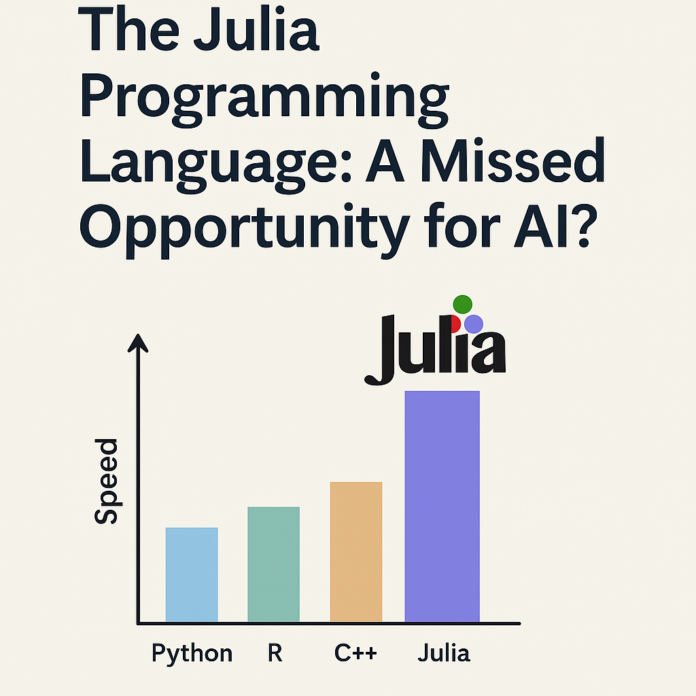Introduction to Julia
In today’s world of artificial intelligence (AI) and data science, two programming languages, Python and R, dominate the landscape. However, there’s another language that has been quietly gaining attention: Julia. Designed to be lightning-fast and mathematically elegant, Julia promises a revolution in high-performance computing and machine learning. But despite its potential, Julia hasn’t yet taken over the industry. Is this a missed opportunity, or does Julia still hold untapped potential for the future of AI and data science?
The Origins of Julia
Julia was created to solve a classic dilemma in the world of programming: the need for a language that is both fast and easy to use for mathematical and scientific computing. This dilemma has long plagued developers, who often have to choose between speed and ease of use. Julia’s creators aimed to change this by designing a language that combines the best of both worlds.
Key Strengths of Julia
So, what makes Julia ideal for AI and data science? Here are some of its key strengths:
- Speed: Julia code runs nearly as fast as C/C++, making it perfect for training large machine learning models.
- Built for Math: Julia has native support for matrices, linear algebra, and complex mathematical operations, making it a great choice for mathematical and scientific computing.
- Dynamic Typing + Performance: Julia combines the flexibility of Python with the speed of compiled languages, giving developers the best of both worlds.
- Rich ML Libraries: Julia has libraries like Flux.jl and MLJ.jl, which aim to make Julia a real player in machine learning.
- Parallel and Distributed Computing: Julia shines when it comes to large-scale data and AI workloads, making it a great choice for big data and high-performance computing.
Challenges Faced by Julia
Despite its strengths, Julia has faced several hurdles that have prevented it from gaining widespread adoption. These include:
- Late Entry: By the time Julia matured, Python had already captured most of the AI and data science market.
- Smaller Ecosystem: Compared to Python’s TensorFlow, PyTorch, and scikit-learn ecosystems, Julia’s libraries are still growing.
- Community Size: Fewer contributors mean slower library and tool development, which can make it harder for Julia to keep up with the latest advancements in AI and data science.
- Learning Curve: For teams already trained in Python, the cost of switching to Julia can be too high.
- Enterprise Hesitation: Big companies tend to prefer battle-tested technology, and Julia is still seen as "experimental" by some.
Real-World Adoption of Julia
Despite the hurdles, some top institutions have embraced Julia. For example:
- MIT’s "Climate Modeling Alliance" uses Julia to simulate complex climate models at unprecedented speeds.
- NASA has experimented with Julia for satellite trajectory optimization, taking advantage of Julia’s unique combination of research-level flexibility and production-level performance.
Future of Julia
So, what does the future hold for Julia? While it may not be the mainstream choice for AI yet, Julia certainly has the potential to be. With its speed, scalability, and mathematical precision, Julia is positioned as a formidable tool for AI, especially in performance-sensitive areas. As AI models continue to grow larger and more computationally demanding, Julia’s high performance could become a major advantage.
Conclusion
Julia is not a missed opportunity for AI, but rather a language that is still finding its niche. While Python may continue to reign as the dominant language for AI development, Julia’s growing ecosystem and advantages for certain AI tasks make it a language to watch. Ultimately, the future could hold a world where Python and Julia complement each other, offering AI practitioners the best of both worlds: the ease of Python with the raw power of Julia. Whether you’re working on highly compute-intensive tasks or looking for performance at scale, Julia might be your best bet. As the AI landscape continues to evolve, it will be exciting to see how Julia fits into the picture.

